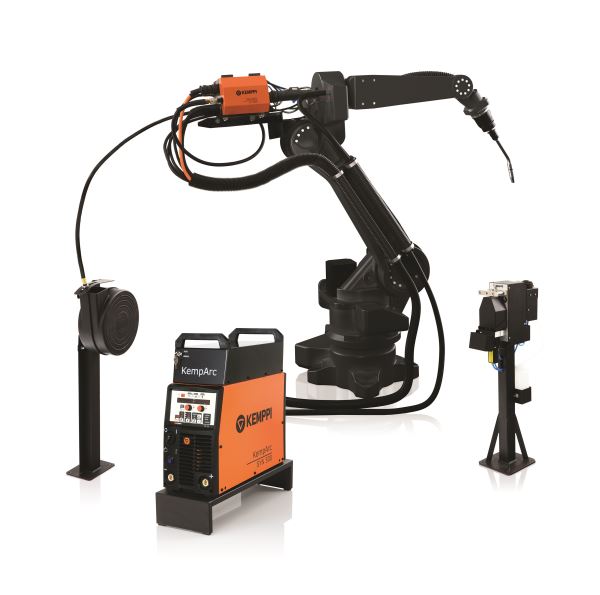Over the past two decades, automation in manufacturing has been transforming factory floors.
To remain globally competitive, manufacturers are embracing Industry 4.0 and the benefits it delivers.
The rise of Industry 4.0 and automation has brought with it a rapid growth of welding robots over manual welding methods.
And strong demand from industries for arc and resistance welding robots – particularly in the APAC region – is expected to drive that growth even further.
The introduction of new materials in industrial processes will further widen the scope for use of robots in handling, cutting and welding.
But while sales of robotic welders have been booming in the APAC region, Australia has been much slower on the uptake.
“The world’s most advanced (robotic welding) technology is now available in Australia, but demand has not been as strong,” says David Green Managing Director, Kemppi Australia, a leading manufacturer and supplier of cutting-edge welding solutions.
The decision to implement robotic welding systems is mainly investment driven, Mr Green says. “A business must be confident of getting a healthy return on its investment.”
Ideal for repetitive welding jobs
And while robotic welding can be used for MIG or TIG welding (the two main processes) it is not suitable for every application.
“It is particularly suited to intensive, repetitive welding jobs such as major production lines,” he says.
“A robotic welder can be programmed to do many different types of welds in any 3-dimentional situation.
“It’s ideal for repetitive tasks and much quicker than human welding while at the same time maintaining the same quality.”
The demise of the automobile industry in Australia and a rapid decline in heavy machinery industries has been largely responsible for the softer demand, he says.
“But in Southeast Asia – and particularly China – it’s a massively growing market.
“In one factory alone in Asia, they will soon be installing 1000 welding robots.”
Increased productivity
Automated welding can improve quality and accuracy, but the key benefit is increased productivity, says Mr Green.
“The quality and accuracy of the process depends on how well a programmer can set up the system. “But with the right application it is much faster than manual welding.”
In some applications – such as production lines – automated welding can also reduce labour costs.
“But in most cases, you need more specialised, qualified people on the factory floor to operate the equipment.”
Mr Green admits automated welding has several benefits for small and large companies and more businesses should consider it as an option.
Used correctly it can provide:
- Greater productivity and throughput
- More consistent, higher quality welds
- Improved safety
- Reduction in weld distortion and reduced waste
- Reduced post-weld clean-up
“As more businesses turn to Industry 4.0 and now Industry 5.0, robotic welding fits very neatly into that kind of philosophy,” says Mr Green.
“At Kemppi we develop all the data management systems and welding quality control as well.
“Basically, we supply the power source, which is similar to a high-end manual welding power source. This is designed to be integrated with the robot.”
While Kemppi does not supply the actual robot its systems are compatible with all major brands.
Kemppi now offers two robotic welding systems.
KempArc Pulse 350 is a CC/CV power source, designed for demanding professional use. It is suitable for synergic MIG/MAG, synergic 1-MIG and basic MIG/MAG.
More recently the company launched the A7 MIG Welding range, designed specifically for robotic welding.
The solution combines special MIG/MAG welding devices, application software, and welding programs in a system that is compatible with all welding robots.
The system comes with the Touch Sense Ignition function, which takes the features related to the arc-ignition stage to a completely new level
Welding skills shortage
So, is robotic welding the solution to the current global shortage of highly qualified welders?
“It’s not that simple,” Mr Green explains.
“Again, it depends on the application – and whether a company can achieve a return on investment. It may not be a viable solution for everyone.”
Can you see a day when robotic welders will replace human welders completely?
“No. You will always need people that are skilled to set up the robots and integrate them with the welding power sources.
“And you need people to analyse and manage the data from the welding process.
“Robotic welding is a fast-growing trend across the world, but in my opinion it will never replace humans – it will remain a tool for production.”


